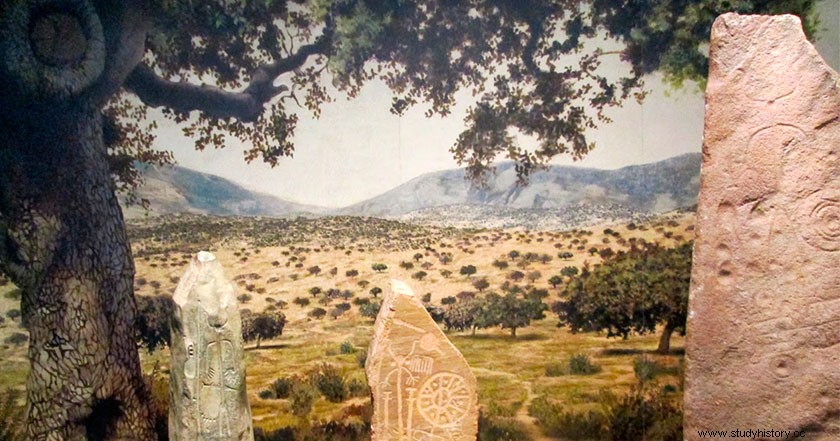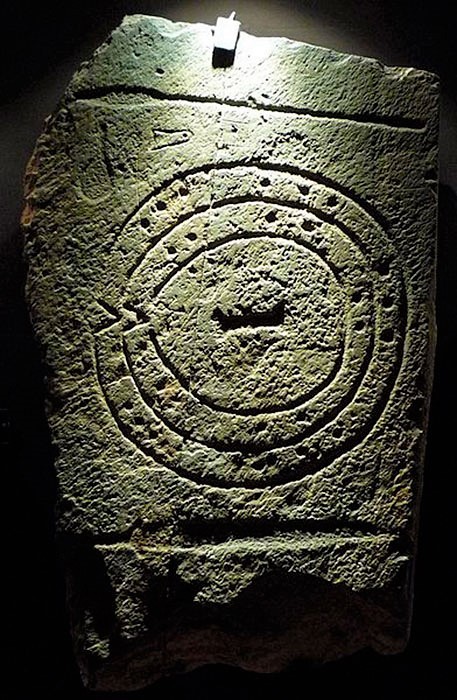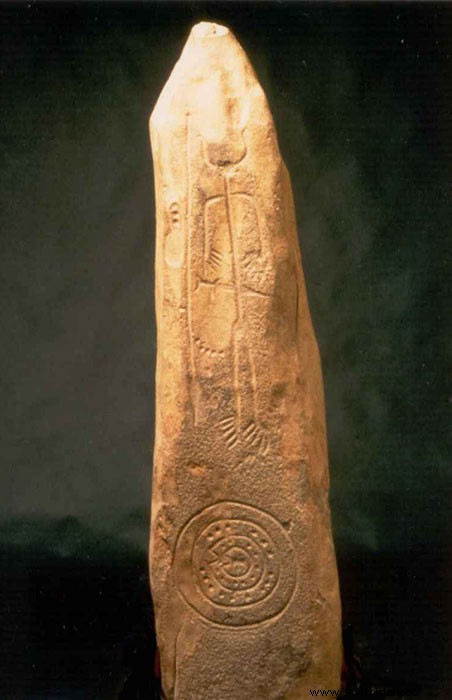
It is not the first time, and I fear not It will be the last one, which we address in Walking through History the theme of Tartessian culture. This time from a point of curiosity at the multiple interpretations that have been given to the warrior steles found in the southwest of the Iberian Peninsula, as well as its possible relationship with Tartessos. Add that they were made in the long period of five centuries between the XI-VI BC, a fact that must be taken with all possible caution.
On the other hand, it is not surprising to find one of these pieces in the digital newspapers of recent years. Normally these are the cause of coincidences, from a tractor that ran into one of them while plowing, to the discovery in the wall of an old agricultural property. Or the paradigmatic case of the stele that was reused as the first entrance step to the Cancho Roano sanctuary. It is at this point where the main problem for its knowledge lies, the so-called "lack of archaeological context", which has led to endless speculations to find its true social meaning.
About this last aspect, by way of summary, we can point out that there are three main hypotheses on which we have worked. The first; which are “funerary stelae ”, this hypothesis arose after one of the first important discoveries, the stele of Solana de Cabañas, which, although unconfirmed, seems to have appeared on some human remains.
The following hypothesis is directly related to the economy, especially the Tartessian period. Without clear certainty, it is thought that they could be territorial markers , located on the transhumance routes for the use of pastures, the main economic engine together with the mining of the Tartessians. But without ruling out the fact that they could serve as the boundaries of cultivated fields in the rich Guadiana valley, or in strategic places of passage for merchants of mining products. The evident thing is that if that was the reason for its elaboration, it would be necessary to weigh that they were later, at the moment that Tartessos became, under the protection of the Greeks and Phoenicians, a stable political entity, and therefore a generator of large commercial surpluses, and evidently with the figure of the warrior leadership behind this economy.
Finally, highlight the religious aspect , with the birth of the supposed Tartessian society, which, as we will see when presenting the last of the examples of warrior stelae, were able to transfer Eastern cults and adapt them to the ancient traditions of the Iberian Peninsula.
Basic stelae and Tartessian stelae.
To date, more than 150 stelae have been catalogued, these have been located, since the end of the 19th century, in the southwestern quadrant of the Iberian Peninsula. At first they were called “funerary stelae”, because of the one from Solana de Cabañas and their evident proximity to the Alentejo, where they have always been linked to the burial of an important representative of the community, which made them wrongly compared. Since the 80s of the 20th century, seeing that their origin was no longer so clear, due to the lack of an associated burial, they began to be called "stelas from the southwest", obviously the simplest thing was not to get wet and just name their geographical origin. .
Given the impossibility of having a reliable dating method and the lack of an archaeological record that would serve as a time frame, in recent years there has been a tendency, based on the symbology represented on the stelae to separate them into two periods.
The basic warrior stele.
In this first case we would be talking about the oldest stelae, made in the pre-Tartesian stage between the XI-IX centuries BC. Its authors seem to have been the inhabitants of the Atlantic final bronze, therefore these stelae would have a high Celtic component originating from the Atlantic migratory movements. Their geographical distribution, despite the fact that they have been found throughout the southwest, is observed in greater numbers north of the Guadiana River.

Brozas Warrior's Stele
As has been said, the represented elements are the ones that help us to get to know them a little better; In none of the basic stelae is a round shield missing, to which we must add spears, swords, or arrows that completed the panoply of a warrior, by the way the latter may or may not appear on the stelae. As an example we have the Brozas stele , with its shield of three concentric circles and a "V" notch, in the lower part a sword and in the upper part a spear, between the latter and the shield appear a series of objects that would be added to the warrior's trousseau as a possible mirror , an object closely related to the funerary world.
The Tartessian warrior steles.
To know the next step in the process of transforming the stelae, we must reflect on the possible moment of the birth of the Tartessian culture. Today it is explained as a meeting of cultures, in a geographical space around the provinces of Huelva, Seville and Cádiz, in which there is a possible demographic gap given the lack of clear archaeological record around the turn of the millennium. Taking advantage of this, at a certain moment the individuals who lived to the north of the Guadiana, begin a descent to the Guadalquivir, where they meet oriental elements, rather Phoenician, established on the coast. Their interaction is seen as the birth of the Tartessian culture.

Warrior stela from Solana de Cabañas
From this period it would be one of the most interesting stelae found in the Iberian Peninsula. The so-called Stela de Solana de Cabañas , found at the end of the 19th century and currently exhibited at the MAN in Madrid. Of all the objects engraved on this stela, the cart in the lower part stands out, which is assigned to an orientalizing component of the figure of the warrior, which in this case does appear on the stela along with the warrior's panoply. In other words, the supposed cultural encounter is already consolidated.
From the 8th-7th centuries BC, the Tartessian culture is well established in the southwest. Especially the river basin of the Guadiana, becomes one of the richest places in the Iberian Peninsula. In addition to the mining and livestock farms, the rich agriculture of the valley with oriental products such as the vine, come together for the consolidation of a rich warrior and aristocratic society. It is under the protection of the latter that sanctuaries such as Cancho Roano must have been born, although it could well be that these had a previous step in the wakes of warriors.

Magacela's Warrior Stele
I was struck by the studies by Professor Antonio Tejera Gaspar from Tenerife, according to whom the characters recorded on the last stelae are divinities arising from the Phoenician component of Tartessos society . As an example the Stela of Magacela , today also exhibited at the MAN in Madrid. While some see the figure of a warrior with a helmet, said professor prefers to see it as the God Baal (normally assigned to the world of the bulls) in the Canaanite culture.
By way of conclusion.
As Sebastián Celestino Pérez says in his article; “the western stelae and the autochthonous component in Tartessus ”, in nº 12 of the magazine Desperta Ferro Arqueologia &Historia dedicated to Tartesso; “We still hope to find that stela in its archaeological context, which will offer us the definitive clue to find the function of the Tartessian warrior stelae ”. To which it only remains to add, that possibly the knowledge of the truth about these stelae, can bring us closer to knowing the myth of Tartessos.
I don't want to conclude without recommending to those who are passionate about Tartessos, the wonderful No. 12 of the Desperta Ferro magazine:

Wake up ferro and tartessos
More info:
institutional
Images:
commons.wikimedia
